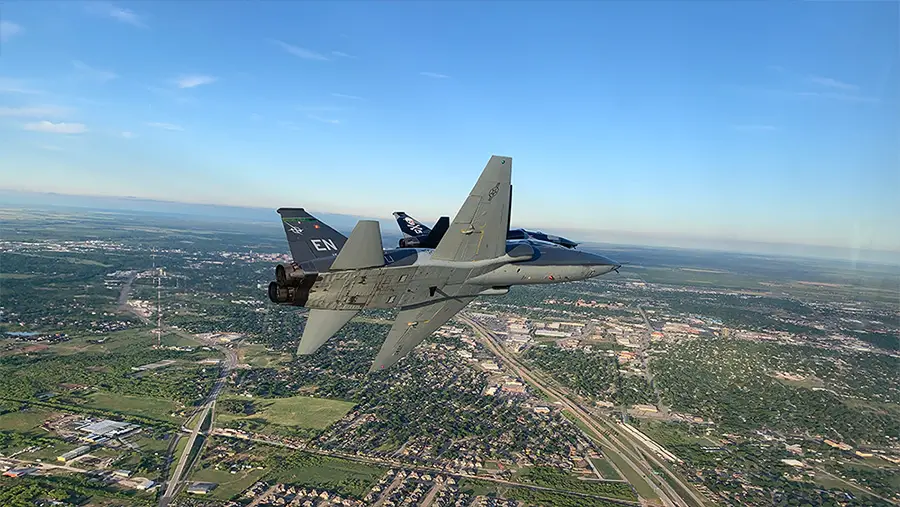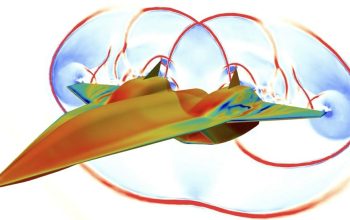The Royal Canadian Air Force is reaffirming its presence at a major multinational jet pilot training school and placing its fighter lead-in training squadron on hiatus, as the RCAF prepares to transition its frontline fighter from the CF18 to the F35. One of the first steps in this transition was implementing an interim or ‘bridge’ training program that sees future Canadian fighter pilots conduct their initial fighter training through the Euro-NATO Joint Jet Pilot Training (ENJJPT) program at Sheppard Air Force Base in Texas, and other Fighter Lead-in Training (FLIT) programs in Finland and at Italy’s International Flight Training School, where Canada will have two instructors and six students by 2025. At the same time, the contract with CAE Inc. for training on the CT-155 Hawk (which has served the RCAF for 24 years) is coming to an end, creating a natural point for the Royal Canadian Air Force to transition to an interim training solution. And while this interim training program is in place, 419 Tactical Fighter Training Squadron will be placed on hiatus to be reactivated in the future with a new fifth-generation trainer aircraft as part of a Future Fighter Lead-in Training program.
Canada is no stranger to ENJJPT, having been part of the program since it was founded in 1981. The aim of the program, at the time, was to increase production and provide common training of NATO pilots during the Cold War. The program, managed by the United States Air Force’s 80th Fighter Training Wing, has typically seen the RCAF post approximately five pilot instructors to instruct at Sheppard Air Force Base, in Northwest Texas, while five to six students train on T-38C Talons as part of their Fighter Lead-in Training before joining 410 Operational Fighter Training Squadron in 4 Wing, Cold Lake. Moving forward, Canada will now be sending up to seven Canadian students each year to ENJJPT with the NATO Flying Training in Canada program, supported by CAE Inc., coming to an end. CT-155 aircraft training operations ceased at 15 Wing Moose Jaw, Sask. in summer 2023. CT-155 Hawks will eventually move to the Canadian Forces School of Aerospace Technology and Engineering at Canadian Forces Base Borden, Ont., where they will support the training of RCAF aircraft technicians.

“With the Hawk reaching the end of its service life after 20 years, Canada, along with many countries is faced with the challenges of what will be the next jet trainer in a world of fifth generation fighter aircraft. ENJJPT and other partnerships will form a ‘Bridge Fighter Lead-in Training’ solution while a Future Fighter Lead-in Training model is decided upon. We initially started doing academics (ground school) for about a month and a half—doing simulators, learning the basics of the aircraft, how the base and airspace works and then we were on the flightline doing different phases of flying; instrument, low level formation flying and others, so it’s a pretty intensive program. By the end, it’s about 90 hours flight time in the T-38, with an additional 30-40 hours in the simulator,” said Colonel Adam Carlson, Director Royal Canadian Air Force Training.
“We always talk about the likelihood of us meeting some of our course-mates on a ramp somewhere in the future. I think we all look forward to those moments,” said Capt Tyson Valette, who graduated the same course.
“We initially started doing academics (ground school) for about a month and a half—doing simulators, learning the basics of the aircraft, how the base and airspace works and then we were on the flightline doing different phases of flying; instrument, low level formation flying and others, so it’s a pretty intensive program. By the end, it’s about 90 hours flight time in the T-38, with an additional 30-40 hours in the simulator. I like the international flavour and it’s probably my favourite part of the program, being able to interact with other nations and see and experience a bit of their culture and air force culture,” said Capt Barkes.

Canadian students arriving at Sheppard are first trained via the Undergraduate Pilot Training program training on the United States Air Force T-38C Talon, a modernized aircraft dating from the early 60s that continues to prove itself a capable fighter trainer. Upon completion of their undergraduate program, students move on to Introduction to Fighter Fundamentals, preparing them for the cockpits of Canada’s current and future combat aircraft. Captain Spencer Barkes, a graduate of the Undergraduate Pilot Training and Introduction to Fighter Fundamentals Courses at Sheppard arrived at ENJJPT in following his Phase II flying course in Moose Jaw. The multinational nature of ENJJPT has continuously proven to be a highlight for Canadian students and instructors. The course Capt. Barkes attended included another Canadian, as well as Belgian, Dutch, German, Spanish and American students and instructors. These kinds of existing training relationships amongst the NATO nations at ENJJPT were major influences for the RCAF when choosing the Bridge FLIT training model.
The increased number of students also means more Canadian instructors on base at Sheppard. Currently there are seven RCAF instructors teaching T-38s, with another teaching the T-6 aircraft. Canadian instructors and students are appreciated by the American leadership at the 80th Wing as well. The RCAF will continue to be a reliable training partner at the world’s only internationally managed flying training program, but for LCol Faith, it is the enthusiasm of the students and instructors that is the most rewarding part. Back home in Canada, 419 Tactical Fighter Training Squadron will officially begin its hiatus period on March 8, 2024 in a ceremony at Cold Lake that will mark the end of CT-155 training operations for the RCAF. While the squadron is on hiatus from operations, LCol Kean says that its personnel will support other units at 4 Wing Cold Lake, Alta., awaiting the planned reactivation of the squadron in the early 2030s. Until then, the squadron will remain administratively active, so that it can resume its role as the RCAF’s Tactical Fighter Training Squadron.
















